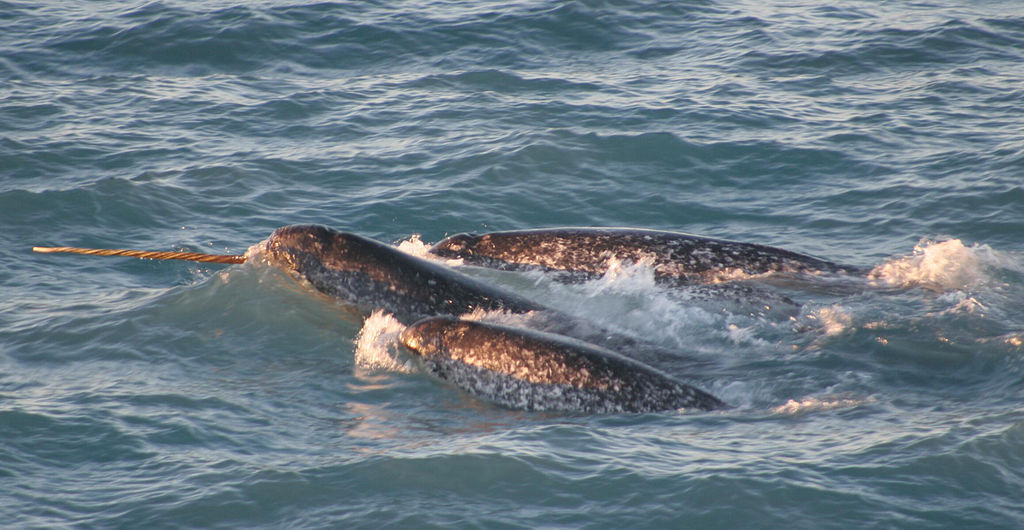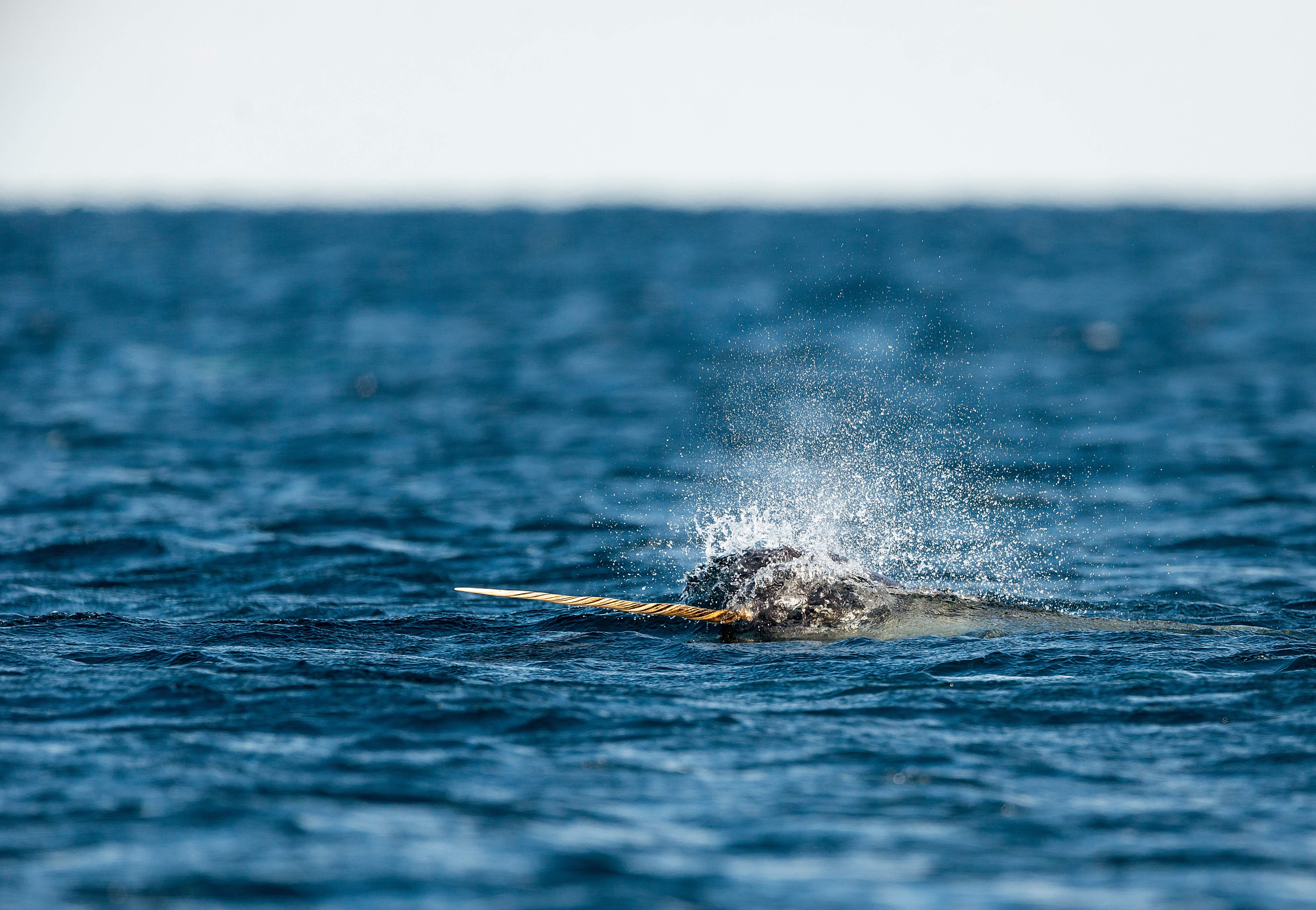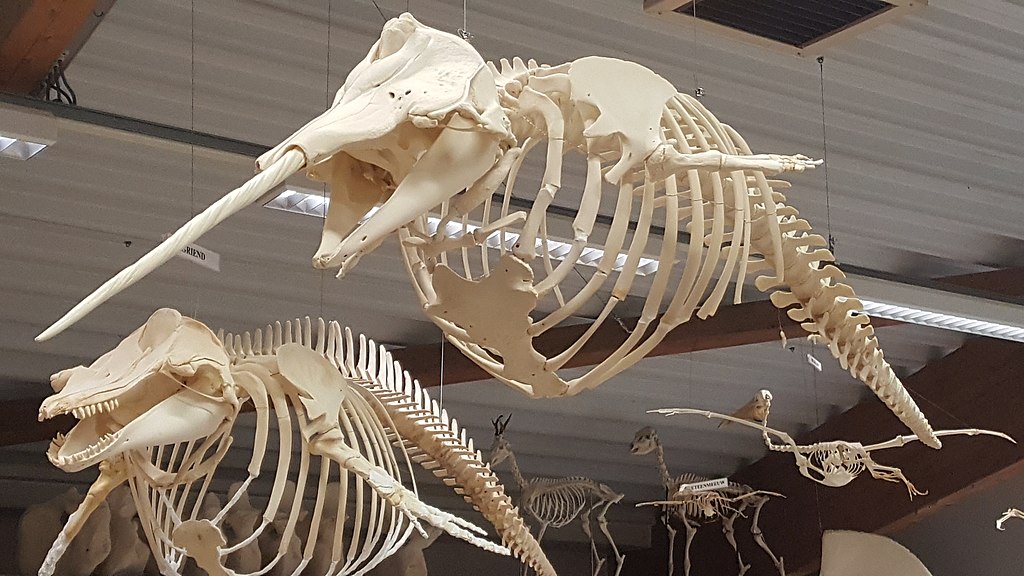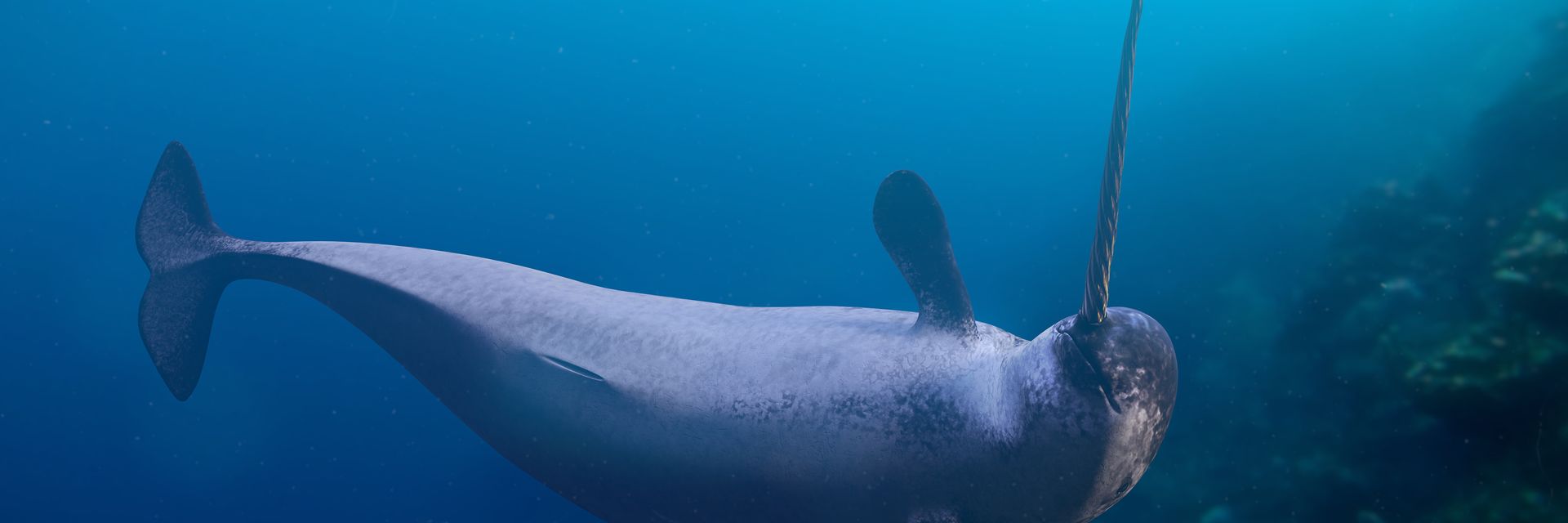[Editor's Note: This article was originally published in May 2019.]
We all know unicorns are not real, but that doesn’t mean their horns are fantasy. Narwhals are a species of whale that sport a single “horn” from their head – just like the unicorn. They have been fantasized about, and, because of their mysterious habits, they have been categorized as myth by some. But narwhals are very much real, and they live in the Arctic seas.

(Image courtesy ofDr. Kristin Laidre, Polar Science Center, UW NOAA/OAR/OER, via Wikimedia)
I feel as though, in recent years, narwhals have become a bit of a pop culture phenomenon. There have been t-shirts, Internet cartoons, and even shot glasses featuring their image. But this odd, aquatic whale has actually been a source of curiosity and fascination since the age of the Vikings.
Are Narwhals Real?
As strange as they appear, narwhals do not just live in our imaginations. These mysterious creatures are real, but they are definitely not something that you come across in your daily life. And that’s not just because the average person can’t say they casually travel through the Arctic Ocean. Even those living in regions that are home to narwhals find it pretty hard to spot them. That’s because their lifestyle is really quite elusive.
A Horned Whale: The Narwhal’s Splendid Tusk
So why all the hype about these crazy whales? The obsession begins with their mythical “horns.” While you may think the sword-like protrusion looks like a horn, you’ll notice the word tusk used to label it. That’s because the narwhal horn isn’t truly a horn at all – it’s an enlarged tooth that can grow as long as 10 feet. While narwhals were once primarily used for both food and fuel, they are now hunted mostly for their tusks.
These animals are not easy to catch. Narwhals are smaller than other types of whales – with an average length of 13-15 feet (making them shorter than a school bus!) – and move surprisingly fast.
And those tusks are incredibly fascinating in and of themselves. Narwhal tusks are most commonly found on males, though they are also sometimes seen in the female population. Most tusk-equipped narwhals have just one, but there are a few that actually have two tusks. And some have no tusk at all.

 (Image courtesy of Adobe Stock)
(Image courtesy of Adobe Stock)

But what’s the point of the tusk? We don’t know for sure, but scientists have their theories. Remember when I said the tusk is an enlarged tooth? Well, a narwhal tusk shares similar characteristics with our human teeth, but with a difference. A human tooth has multiple layers: from outside to inside, there’s the enamel, hard dentin and cementum, and pulp. A narwhal tooth is the opposite, leaving the softest part exposed. Some scientists hypothesize that this inside-out arrangement allows narwhals to detect important information like water pressure and temperature. But what of the narwhals without tusks? Well, maybe researchers need to come up with some new ideas.
Where Do Narwhals Live?
So where can you find a narwhal? Narwhals glide through the Arctic seas of Canada, Greenland, Norway, and Russia. But just because we know where they live doesn’t mean they are easy to find. For most of the year, narwhals live in the cracks of densely packed ice. And when they’re not wintering between sheets of ice, they can dive up to 1.5 miles deep below the surface. Narwhals are so difficult to study that researchers can’t even reliably document their current population trend.
Caging a Legend: Why Narwhals Can Not Live in Captivity
Unfortunately, you’ll have to travel to them if you ever want to catch a glimpse of their majestic horns. Why’s that? Narwhals cannot be kept in captivity. While people have tried to cage the obscure Monodon Monoceros (the fancy, scientific name for this species meaning “one tooth, one horn”), the creatures cannot survive in an enclosed environment. In fact, every narwhal that has been kept in captivity has died.

(Image courtesy of Patrick Kelley, via Wikimedia)
Narwhals are part of the Monodontidae family, and share this genealogy with the beluga whale. Monodontidae cetaceans include only these two whale species, and are native to the coastal regions of the Arctic Ocean.
In the wild, narwhals live and travel in groups. They often swim with 15 to 20 others, though gatherings of several hundreds or even thousands have been reported. Could you imagine the sight of several thousand narwhals swimming? That’s not something you’d see just any day.
How Long Do Narwhals Live?
Just how long are these creatures’ lifespans? While narwhals may not be eligible for AARP cards during their lifetimes, they still clock in at about 50 years on average. That doesn’t really compete with their other whale cousins, whose average lifespan is closer to 200 years, but it still can bring them to the age when we humans begin to experience our mid-life crises. So don’t worry! Narwhals have plenty of time to enjoy their existential panic. And, even better, they don’t have any natural predators to fear other than killer whales that sometimes make it up to the Arctic. But, while there are few animals they need to watch out for, there is another danger to them: human hunters.
Five Fun Narwhal Facts:
1. The Unicorn Connection:
Narwhals are often referred to as the “unicorns of the sea,” and for good reason. In medieval times, Vikings often hunted narwhals and sold their tusks as “unicorn horns” to unsuspecting Europeans. The clever, yet deceitful, Vikings were able to get away with it, too. Because narwhals could only survive in cold, remote locations, they were pretty much unknown to the people living south of the Arctic. Since the buyers were unaware of the creatures or their horns, the Vikings were able to carry out their scheme.
2. Narwhals for … Dinner?
Narwhals aren’t just eaten out of necessity; for the Inuit people, in fact, they are a delicacy. It’s rumored that the meat tastes like hazelnuts, and the creatures offer great nutritional benefits too – they are full of vitamins and minerals, and a single ounce of narwhal meat has the same amount of vitamin C as an orange.
Even though Narwhals may be classified as “Near Threatened” by the International Union for Conservation of Nature, Inuit can freely hunt the animal. What is illegal, though, is the importation and sale of narwhals in the United States. Narwhals may seem like an odd thing to smuggle into a country, but for some it’s a lucrative item on the black market.

Image courtesy of Pcornill, via Wikimedia)
3. Corpse of the Sea:
The name “Narwhal” is actually derived from the old Norse word meaning “corpse whale.” But why would they call this majestic creature a corpse? Narwhals are covered in black and white mottled skin and they often lie inactive, just below the surface. So, to inexperienced observers, narwhals appeared to be dead and were often – and grotesquely – mistaken for the corpses of sailors lost to sea.
4. A Whale of a Different Color:
Just like the Horse of a Different Color in the Emerald City of The Wizard of Oz, narwhals, too, change color. They may start off with a blue-grey color, but their color transforms over their lifetimes. They change from their newborn color of blue-grey to blue-black in their juvenile years. Adult narwhals are mottled grey, and then turn white in old age (just like us and our grey hairs).
5. Order Up! What do Narwhals Eat?
Narwhals might not be ordering sushi or filet-o-fish sandwiches, but their diet isn't too different from some of us. Narwhals like to munch on Greenland halibut, Arctic and Polar cod, squid, and shrimp. They can be found fishing for dinner at the ice floe edge, where open water meets ice still attached to the shoreline, and in the ice-free summer waters.
While we know some fun facts about these interesting creatures, there is still a lot more for researchers to learn. For example, we only recently discovered what narwhals’ diets consisted of, thanks to the research conducted by biologist Kristin Laidre and reported in a 2005 study. (Hint: narwhals love to binge on squid, halibut, shrimp, Arctic cod, rockfish, flounder, and crab.)
Narwhals aren’t the only impressive species of the arctic. If you’d like to take a deeper dive into the lives of these fascinating animals, check out Arctic Ocean: The Frozen Sea.
Ω
Title image: Narwhal, Monodon monoceros swimming in the ocean. (Credit: dottedyeti, via Adobe Stock)

